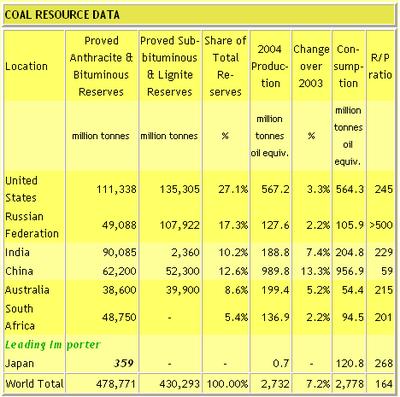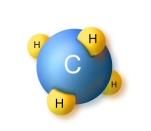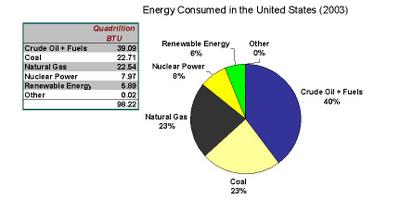- Energy Audits: Level 1 Energy Audits cost $500-$2K, Level 2 energy audits cost $3K - $5K, and Level 3 energy audits cost ~$0.10 to $.020 per square foot on average.
- Retro-Commissioning: On average costs $.19 per square foot and produces a payback of 2 years or less. 5% to 20% savings is common.
Friday, November 11, 2005
Focus: Commercial Building Energy Audits
Tuesday, November 08, 2005
Can Energy Conservation Reduce Natural Gas Consumption
The American Council for an Energy Efficient Economy developed a white paper discussing the impact of energy conservation activities on the growth of demand for natural gas in the US. (Read More)
Report: What Have States Done About Energy Efficiency
The American Council for an Energy Efficient Economy published a report on what Policies the States have taken to promote energy efficiency (Read More)
Thursday, November 03, 2005
PEW Center - Is Global Warming Real?
The Pew Center on Global Climate Change brings together business leaders, policy makers, scientists, and other experts to bring a new approach to a complex and often controversial issue. Our approach is based on sound science, straight talk, and a belief that we can work together to protect the climate while sustaining economic growth. (Go to WebSite)
Wednesday, November 02, 2005
Is "Pooling" of Energy Purchases with Competitors a Reality
With energy rates escalating, major companies are now starting to "Pool" their electricity and natural gas purchases with other companies. (Read More)
Monday, October 31, 2005
Is Russia the Next Middle East for US Energy Supply?
A quiet deal between the U.S. and Russia could change the landscape and the entire power structure in the energy markets.
Liquefied natural gas (LNG) from Russia, could be on its way to the U.S. by 2008. According to the Moscow Times, the controversial Sakhalin field could be fully operational by then, making the Murmansk port a key cog in the Russian LNG industry. (Read More)
Liquefied natural gas (LNG) from Russia, could be on its way to the U.S. by 2008. According to the Moscow Times, the controversial Sakhalin field could be fully operational by then, making the Murmansk port a key cog in the Russian LNG industry. (Read More)
Friday, October 21, 2005
Coal - Proven Reserves & International Imact
The Energy Blog has compiled an excellent summary on Proven Coal Reserves, and the impact on Coal Rates. Pay special note to the R/P ratio (Reserve to Production) to realize the challenges facing the United States. (Read More)


Natural Gas - Proven Reserves & Imact on Pricing
The Energy Blog has compiled an excellent summary on Proven Natural Gas Reserves, and the impact on Natural Gas Rates. Pay special note to the R/P ratio (Reserve to Production) to realize the challenges facing the United States. (Read More)


Gasoline Prices Fact or Fiction: A Primer on Supply and Demand
A great discussion on what drives gasoline pricing by Tom Lehman (Read More)
Wednesday, October 19, 2005
Liquified Natural Gas Report and Pictures
The following site has an amazing overview of liquified natural gas issues and pictures....(Link)
Tuesday, October 18, 2005
The Energy High Performance Buildings Database (DOE)
The High Performance Buildings Database which is sponsored by the U.S. Department of Energy seeks to collect data on various factors that affect a building's performance, such as energy, materials, and land use. The database collects information from buildings around the world, ranging from homes and commercial interiors to large buildings and even whole campuses and neighborhoods. These may be certified green projects, or simply projects that have one or more notable environmental features. (Read More...)
Thursday, October 13, 2005
Training - Commercial Building Energy Systems
Energy User News publishes a series of reports that discuss the fundamentals of energy systems used in commercial and manufacturing industries (Read More)
PG&E also offers many training articles on energy issues as well (Read More)
Energy Equipment Guides
PG&E also offers many training articles on energy issues as well (Read More)
Energy Equipment Guides
Oil: Its the US vs. China
The US and China are the two elephants in the room, both gobbling up oil at an unsustainable rate given current supplies and production. We’re going to run out unless we learn to conserve and produce more. (Read More from FORBES)
Wednesday, October 12, 2005
Digitally Addressable Lighting Technology has Potential
DALI (Digitally Addressable Lighting Interface) is an emerging lighting control technology that may change the future of lighting in commercial buildings. Each lighting fixture can:
- Be "Addressed" and assigned to a lighting/operating zone.
- Allow dimming of light between 1% and 100%.
- Provide remote feedback on bulbs/ballasts that are burned out.
However - The economics are not yet there (See below table). I predict - It is only a matter of time until this becomes standard practice in commercial properties. (Read More)

Thursday, September 15, 2005
2005 Energy Bill - H.R.6
Wednesday, September 14, 2005
US Energy Officials Warn of Much Higher Natural Gas Rates in 2005
Winter heating bills could jump as much as 50% and could swell even more if forecasts for colder weather are realized, U.S. energy officials warned Wednesday. (Read More)
Tuesday, July 19, 2005
Research Shows Ethanol isn't Worth the Energy
Farmers, businesses and state officials — including many in Nebraska — are investing millions of dollars in ethanol and biofuel plants as renewable energy sources, but a new study says the alternative fuels burn more energy than they produce.
Supporters of ethanol and other biofuels contend they burn cleaner than fossil fuels, reduce U.S. dependence on oil and give farmers another market to sell their produce.
But researchers at Cornell University and the University of California-Berkeley say it takes 29 percent more fossil energy......
Article Continued
There is also the Counter Argument that Ethanol IS worth the energy (Read More)
Supporters of ethanol and other biofuels contend they burn cleaner than fossil fuels, reduce U.S. dependence on oil and give farmers another market to sell their produce.
But researchers at Cornell University and the University of California-Berkeley say it takes 29 percent more fossil energy......
Article Continued
There is also the Counter Argument that Ethanol IS worth the energy (Read More)
Friday, July 15, 2005
China Energy Efficiency Urged due to Searing Temperatures
"Energy-efficiency" has become a catchphrase in booming China as searing temperatures across the nation drove up demand for power and water over the past month. The world's most populous nation is likely to face its worst energy crunch in two decades as 25 provincial-level power grids have started power cut-backs and more than 400 cities are suffering from water shortfalls............
Goto Article
Goto Article
Thursday, July 14, 2005
What is Natural Gas?

Natural gas is a fossil fuel. This means it originates from the remains of plants and animals that lived many millions of years ago. These organisms were buried and exposed to heat as a result of being highly compressed underneath thousands of meters of soil and rock. These forces transformed the once living organisms into natural gas.
Natural gas is found in reservoirs beneath the surface of the earth. Large layers of rock trap the natural gas as it tries to float to the surface. Although the areas where the gas is trapped are referred to as pools, the natural gas molecules are actually held in small holes and cracks throughout the rock formation.
Geologists, using sophisticated technology, help locate potential pools of natural gas, so they know where to drill a well to extract gas. However, due to the complexity of locating natural gas trapped many meters, and sometimes kilometres, below the surface, the exploration process is not always successful.
Once removed from an underground reservoir, the natural gas is usually transferred to a gas processing plant to remove impurities and by-products. Some of these by-products, including ethane, propane, butane, and sulphur, are extracted for other uses. After being processed, the clean natural gas (almost pure methane) is transported through a network of pipelines and delivered to its point of use, including our homes.
Natural gas is a hydrocarbon, which means it is made up of compounds of hydrogen and carbon. The simplest hydrocarbon is methane; it contains one carbon atom and four hydrogen atoms.
Natural gas can be found by itself or in association with oil. It is both colourless and odourless and is in fact a mixture of hydrocarbons. While mainly methane, the other hydrocarbons include ethane, propane, and butane. Water, oil, sulphur, carbon dioxide, nitrogen, and other impurities may be mixed with the gas when it comes out of the ground. These impurities are removed before the natural gas is delivered to our homes and businesses.
Natural gas can be measured in a variety of ways, although the most common unit of measurement is the Gigajoule (GJ), which signifies one billion joules, the metric measure for heat or energy. Other measures are Mcf (thousand cubic feet) and Btu (British Thermal Unit).
More on Natural Gas.....
Energy in a Cubic Meter of Natural gas
Further Overview of Natural Gas
Friday, July 08, 2005
How Much Energy is Consumed in the World?
The World consumed 411 quadrillion (ie. 10^15) BTU’s of energy in 2002 as follows:




How Much Energy is Consumed in the United States?
The United States consumed 98.2 quadrillion (ie. 10^15) BTU’s of energy in 2003 as follows:
(EIA Annual Energy Outlook 2005)

(EIA Annual Energy Outlook 2005)

Subscribe to:
Posts (Atom)

